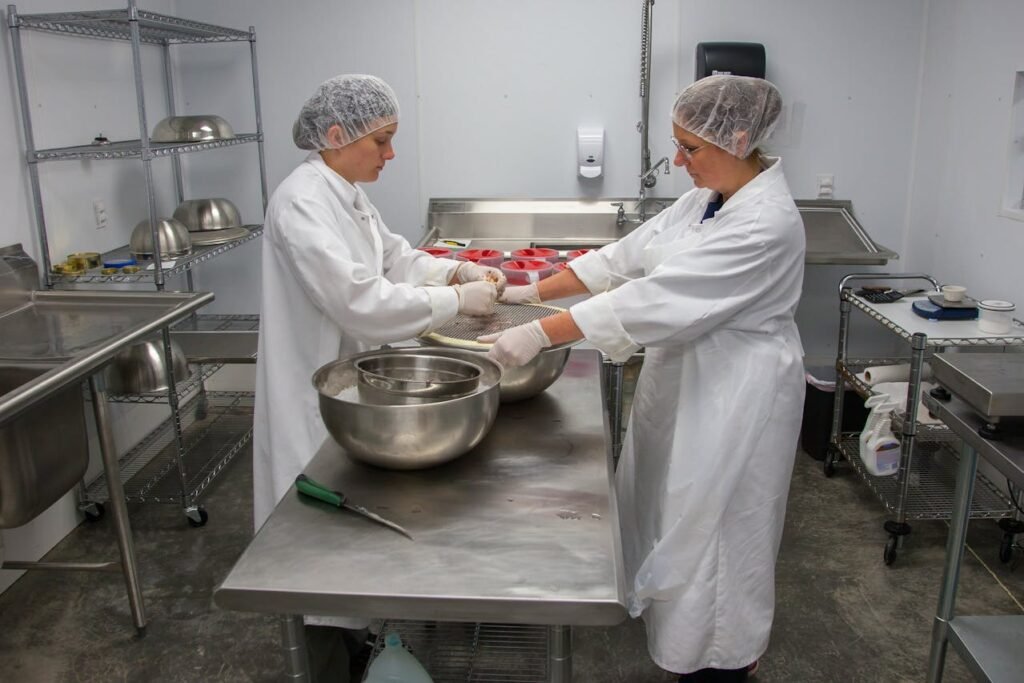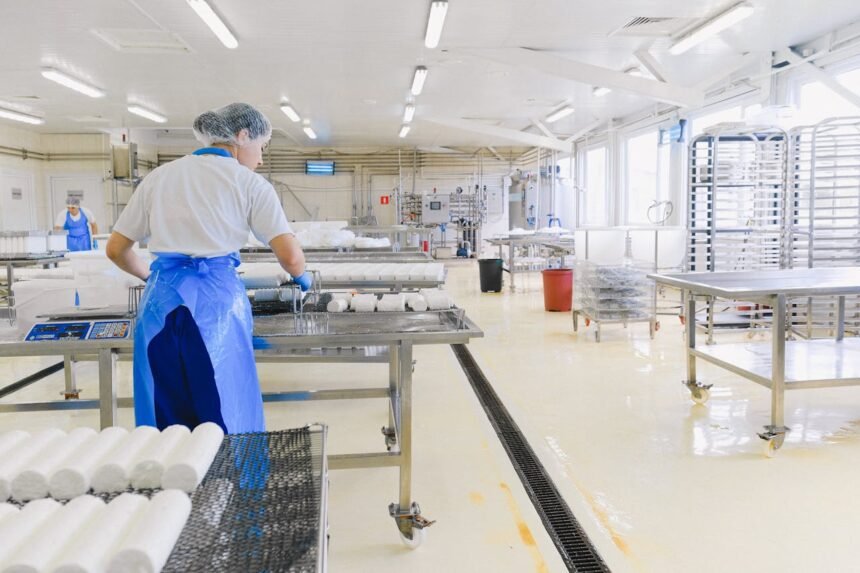Food safety represents one of the most critical aspects of home cooking, yet many people underestimate the risks associated with improper food handling. Each year, approximately one million people in the UK suffer from foodborne illnesses, most of which are preventable through proper kitchen hygiene and food handling practices. Understanding and implementing food safety principles protects families from serious illness whilst ensuring that healthy, nutritious meals remain safe to consume.
Understanding Foodborne Illness Risks
Foodborne illnesses result from consuming contaminated food or beverages, with symptoms ranging from mild stomach upset to severe complications requiring hospitalisation. The most vulnerable populations include young children, pregnant women, older adults, and individuals with compromised immune systems.
The Food Standards Agency provides comprehensive guidance on food safety at https://www.food.gov.uk/food-safety-and-hygiene emphasising that proper food handling significantly reduces the risk of foodborne illness whilst maintaining the nutritional quality of foods.
Common Foodborne Pathogens
Salmonella: Found in poultry, eggs, and produce, causing fever, diarrhoea, and vomiting that can last several days.
Campylobacter: The most common cause of food poisoning in the UK, primarily associated with poultry and causing severe digestive symptoms.
E. coli: Can cause serious complications, particularly dangerous for children and older adults, often associated with undercooked meat and contaminated vegetables.
Listeria: Particularly dangerous for pregnant women and older adults, found in ready-to-eat foods, soft cheeses, and processed meats.
Norovirus: Highly contagious virus causing vomiting and diarrhoea, often spread through contaminated surfaces and poor hand hygiene.
The Four Pillars of Food Safety
Clean: Maintaining Proper Hygiene
Hand washing represents the most critical food safety practice, yet many people fail to wash their hands adequately or frequently enough.
Proper Hand Washing Technique: Wash hands with warm, soapy water for at least 20 seconds before handling food, after touching raw meat, after using the toilet, and after touching pets or surfaces.
Surface Sanitisation: Clean and sanitise all food preparation surfaces, cutting boards, and utensils before and after use, particularly after contact with raw meat, poultry, or seafood.
Kitchen Towel Management: Use disposable paper towels or clean cloth towels for drying hands and cleaning surfaces. Wash dish towels frequently in hot water to prevent bacterial growth.
Equipment Cleaning: Wash can openers, knife blades, and other kitchen tools that come into contact with food to prevent cross-contamination between uses.
Separate: Preventing Cross-Contamination
Cross-contamination occurs when harmful bacteria spread from one food item to another, often through shared cutting boards, utensils, or storage containers.
Cutting Board Strategy: Use separate cutting boards for raw meat, poultry, seafood, and ready-to-eat foods. Colour-coded boards help family members maintain proper separation.
Storage Separation: Store raw meat, poultry, and seafood on the bottom shelf of the refrigerator to prevent drips from contaminating other foods.
Utensil Protocols: Never use the same utensils for raw and cooked foods without thorough washing. Keep separate sets of tongs, spatulas, and knives for different food categories.
Shopping Bag Organisation: Separate raw meats from other groceries during shopping and transport to prevent contamination before food reaches the kitchen.
The NHS provides specific guidance on children’s food safety at https://www.nhs.uk/baby/weaning-and-feeding/childrens-food-safety-and-hygiene/, emphasising the importance of separation techniques when preparing family meals.
Cook: Achieving Safe Temperatures
Proper cooking temperatures destroy harmful bacteria that may be present in food, making temperature control crucial for food safety.
Meat Temperature Guidelines: Use a food thermometer to ensure meats reach safe internal temperatures: 75°C for whole poultry, 70°C for ground meats, and 63°C for whole cuts of beef, pork, and lamb.
Egg Safety: Cook eggs until both yolk and white are firm, reaching an internal temperature of 71°C. Avoid dishes containing raw or undercooked eggs for vulnerable individuals.
Reheating Standards: Reheat leftovers to 75°C throughout, ensuring food is steaming hot. Only reheat food once, and discard any portions not consumed immediately.
Microwave Considerations: When using microwaves, ensure food heats evenly by stirring during cooking and allowing standing time for heat distribution.
Chill: Proper Temperature Control
Temperature control prevents bacterial growth that occurs rapidly at room temperature, making proper refrigeration essential for food safety.
Refrigerator Temperature: Maintain refrigerator temperature at or below 4°C and freezer temperature at -18°C or below. Use refrigerator thermometers to monitor temperatures accurately.
Two-Hour Rule: Refrigerate perishable foods within two hours of cooking or purchasing, or within one hour when ambient temperature exceeds 32°C.
Thawing Safety: Thaw frozen foods in the refrigerator, under cold running water, or in the microwave—never at room temperature where bacteria can multiply rapidly.
Storage Duration: Follow recommended storage times for different foods, using a “first in, first out” rotation system to ensure older items are used before newer purchases.

High-Risk Foods and Special Precautions
Raw and Undercooked Animal Products
Poultry: Requires particular attention due to high Salmonella and Campylobacter contamination rates. Never wash raw chicken as this spreads bacteria around the kitchen.
Ground Meats: Higher surface area increases bacterial contamination risk, requiring thorough cooking to safe internal temperatures.
Seafood: Fresh fish and shellfish deteriorate quickly and may harbour various pathogens. Purchase from reputable sources and consume promptly.
Eggs: Choose Lion Quality eggs in the UK, which have reduced Salmonella risk. Store in the refrigerator and use within the recommended timeframe.
Ready-to-Eat Foods
Deli Meats: Listeria can grow at refrigerator temperatures, making proper storage and consumption timing crucial for these products.
Soft Cheeses: Unpasteurised varieties pose particular risks for pregnant women and older adults due to potential Listeria contamination.
Pre-Cut Produce: Fruits and vegetables cut at retail locations may have higher contamination risks than whole produce cut at home.
Government guidance on food safety responsibilities can be found at https://www.gov.uk/food-safety-your-responsibilities emphasising individual responsibility for maintaining safe food handling practices.
Kitchen Organisation for Food Safety
Equipment and Tools
Cutting Board Maintenance: Replace cutting boards when they become heavily scarred or difficult to clean thoroughly. Wooden boards require different care than plastic varieties.
Thermometer Use: Invest in reliable food thermometers and calibrate them regularly to ensure accurate temperature readings.
Storage Containers: Use appropriate containers with tight-fitting lids for storing leftovers and prepared foods in the refrigerator.
Workflow Planning
Preparation Sequence: Plan food preparation to minimise cross-contamination risks by preparing ready-to-eat foods before handling raw meats.
Clean-as-You-Go: Maintain clean work surfaces throughout cooking by washing dishes and utensils as they’re used rather than allowing contaminated items to accumulate.
Time Management: Plan cooking times to ensure hot foods remain at safe temperatures and cold foods aren’t left at room temperature for extended periods.
Special Populations and Food Safety
Pregnant Women
Pregnancy increases susceptibility to foodborne illness and may result in serious complications for both mother and baby.
Foods to Avoid: Raw or undercooked eggs, unpasteurised dairy products, raw or undercooked meat and seafood, and certain fish high in mercury.
Safe Alternatives: Choose pasteurised products, well-cooked meats and eggs, and low-mercury fish options to maintain nutrition whilst minimising risks.
Young Children
Children’s developing immune systems make them particularly vulnerable to foodborne illnesses, requiring extra precautions in food preparation.
Age-Appropriate Foods: Avoid honey for infants under 12 months, whole nuts for children under 5, and ensure all foods are age-appropriate textures to prevent choking.
Hygiene Education: Teach children proper hand washing techniques and involve them in safe food preparation practices appropriate for their age.
NHS guidance specifically addresses preparing food safely for babies at https://www.nhs.uk/start-for-life/baby/weaning/safe-weaning/preparing-food-safely/ providing detailed information for parents and caregivers.
Older Adults
Age-related changes in immune function increase susceptibility to foodborne illness whilst potentially making symptoms more severe.
Enhanced Precautions: Pay particular attention to expiration dates, proper storage temperatures, and thorough cooking of potentially risky foods.
Medication Considerations: Some medications may affect immune function or interact with foodborne pathogens, requiring additional safety measures.
Food Storage Best Practices
Refrigerator Organisation
Temperature Zones: Understand that different areas of the refrigerator maintain different temperatures, with the door being warmest and lower shelves being coldest.
Air Circulation: Avoid overcrowding the refrigerator to ensure proper air circulation and consistent temperatures throughout.
Leftovers Management: Label leftovers with contents and date, store in shallow containers for rapid cooling, and use within recommended timeframes.
Pantry Safety
Dry Goods Storage: Store flour, grains, and other dry goods in airtight containers to prevent pest infestation and maintain quality.
Rotation System: Use older items first and regularly check expiration dates to prevent consuming spoiled foods.
Pest Prevention: Maintain clean storage areas and promptly address any signs of pest activity that could contaminate food supplies.
Emergency Situations and Food Safety
Power Outages
Refrigerator Guidelines: Keep refrigerator and freezer doors closed during power outages. Food in a full freezer will stay frozen for 48 hours, whilst a half-full freezer maintains temperature for 24 hours.
Temperature Monitoring: Use appliance thermometers to assess food safety after power restoration. Discard perishable foods that have been above 4°C for more than two hours.
Natural Disasters
Water Safety: Use only safe water for food preparation and ice making. When in doubt, use bottled water or properly treated water.
Emergency Supplies: Maintain emergency food supplies that don’t require refrigeration and have extended shelf lives.
Food Safety Myths and Facts
Common Misconceptions
Smell Test Reliability: Many harmful bacteria don’t produce detectable odours, making visual and smell tests unreliable for determining food safety.
Temperature Myths: Room temperature is not safe for perishable foods regardless of how quickly you plan to consume them.
Freezing Limitations: Freezing stops bacterial growth but doesn’t kill bacteria, meaning proper handling remains important after thawing.
Evidence-Based Practices
Hand Sanitiser Limitations: Alcohol-based hand sanitisers don’t effectively remove all types of contamination and cannot replace proper hand washing with soap and water.
Natural Cleaning Products: Whilst some natural products have antimicrobial properties, commercial sanitisers designed for food contact surfaces provide more reliable pathogen elimination.
Professional Food Safety Standards
Restaurant Industry Practices
Understanding professional food safety standards can inform home practices and help consumers make informed choices when dining out.
HACCP Principles: Hazard Analysis and Critical Control Points systems identify potential risks and establish controls to prevent contamination.
Staff Training: Professional kitchens require extensive staff training on food safety practices that can be adapted for home use.
Documentation: Restaurants maintain detailed records of temperatures, cleaning schedules, and food sources that home cooks can adapt through simple logging practices.
Technology and Food Safety
Modern Tools
Smart Thermometers: Digital and app-connected thermometers provide accurate temperature readings and can alert users when foods reach safe temperatures.
Refrigerator Monitoring: Some modern refrigerators include temperature monitoring systems that alert users to temperature fluctuations.
Food Safety Apps: Various smartphone applications provide guidance on safe cooking temperatures, storage times, and food safety practices.
Traditional Methods
Visual Indicators: Learning to recognise visual signs of proper cooking, such as clear juices from poultry and proper colour changes in meat.
Time and Temperature Charts: Printed reference materials provide quick access to safe cooking temperatures and storage times without relying on technology.
Conclusion
Food safety in the kitchen requires consistent attention to hygiene, temperature control, and proper food handling practices. By implementing the four pillars of food safety—clean, separate, cook, and chill—families can significantly reduce their risk of foodborne illness whilst maintaining the nutritional quality and enjoyment of their meals.
Success lies in developing routines that make food safety practices automatic rather than burdensome. Start with basic practices like proper hand washing and temperature monitoring, then gradually incorporate more comprehensive safety measures as they become habit.
Remember that food safety is particularly important for vulnerable populations, including young children, pregnant women, and older adults. The extra time and attention invested in proper food safety practices provide invaluable protection for family health and wellbeing, making these efforts a worthwhile investment in long-term health outcomes.






